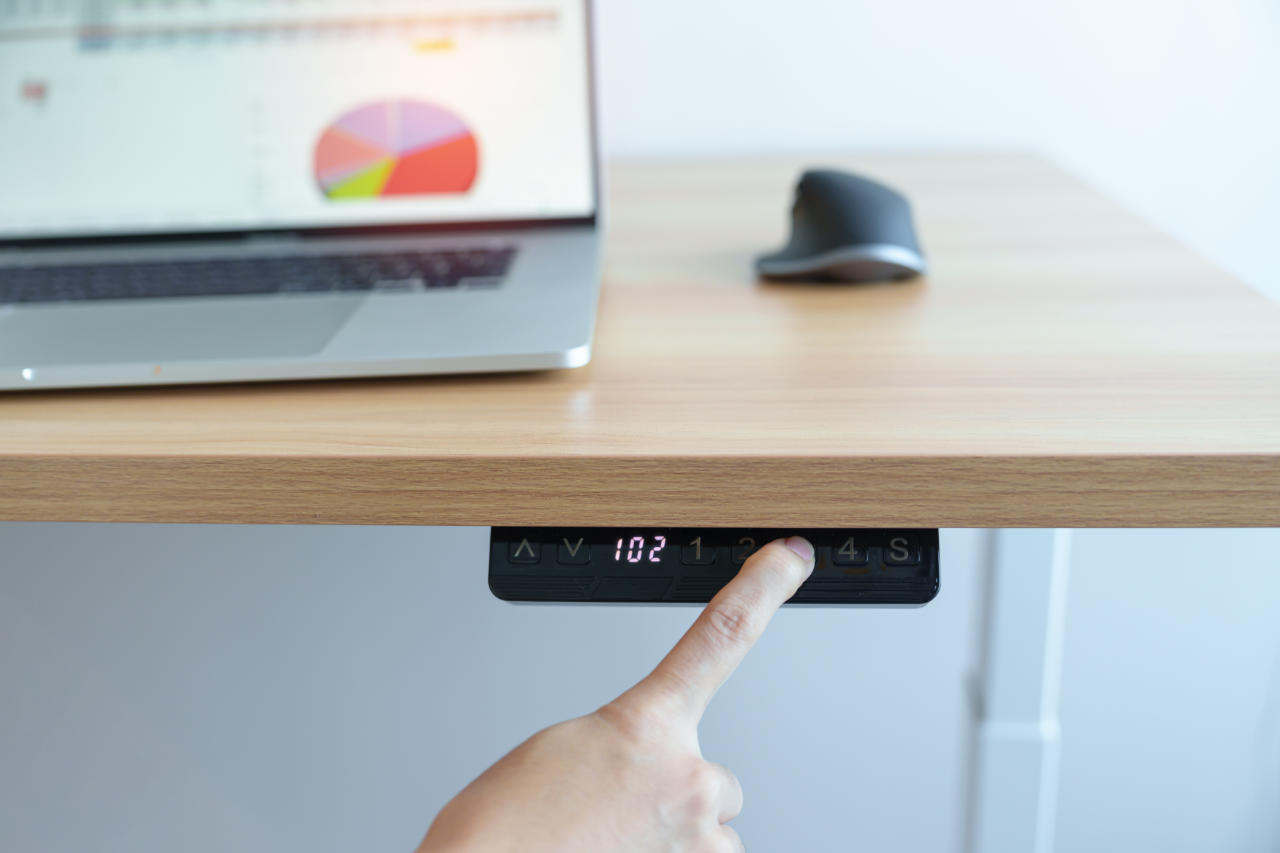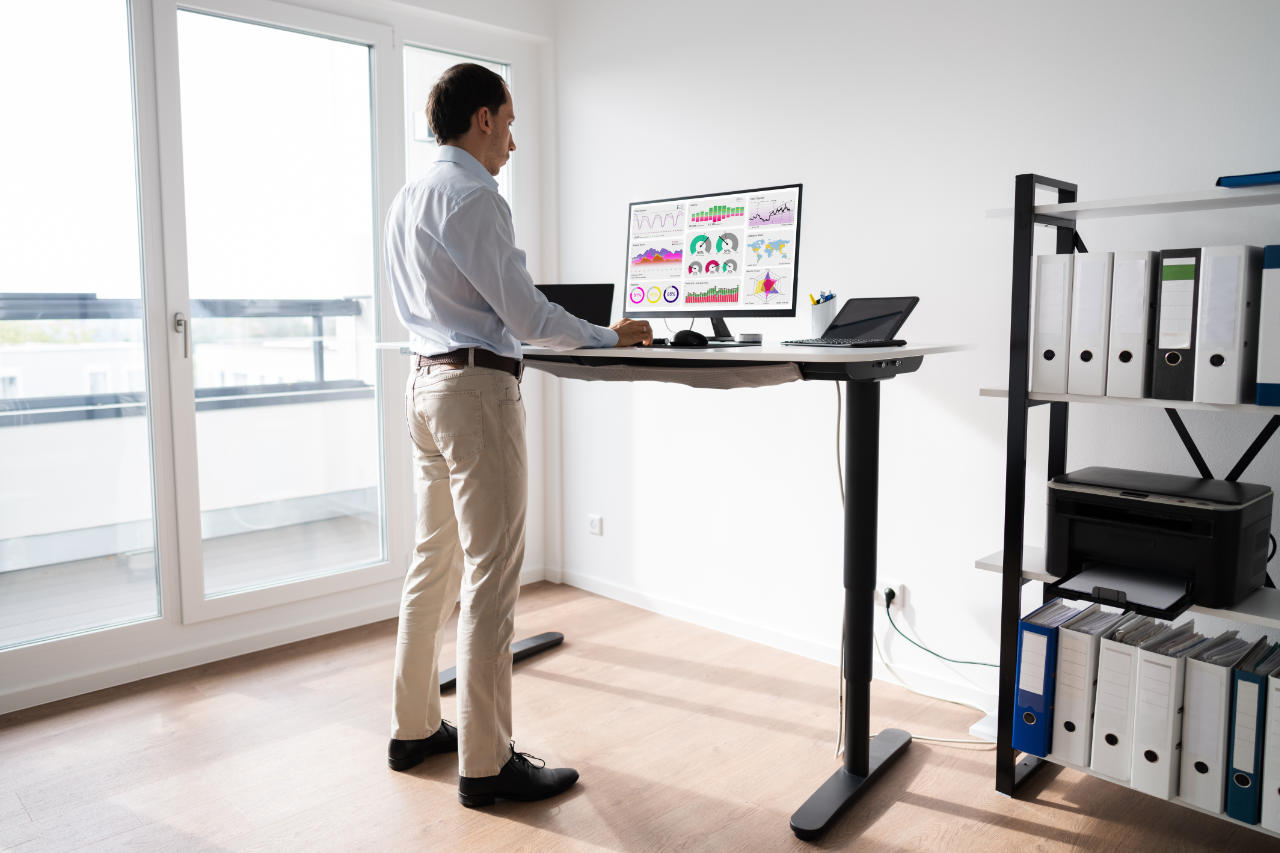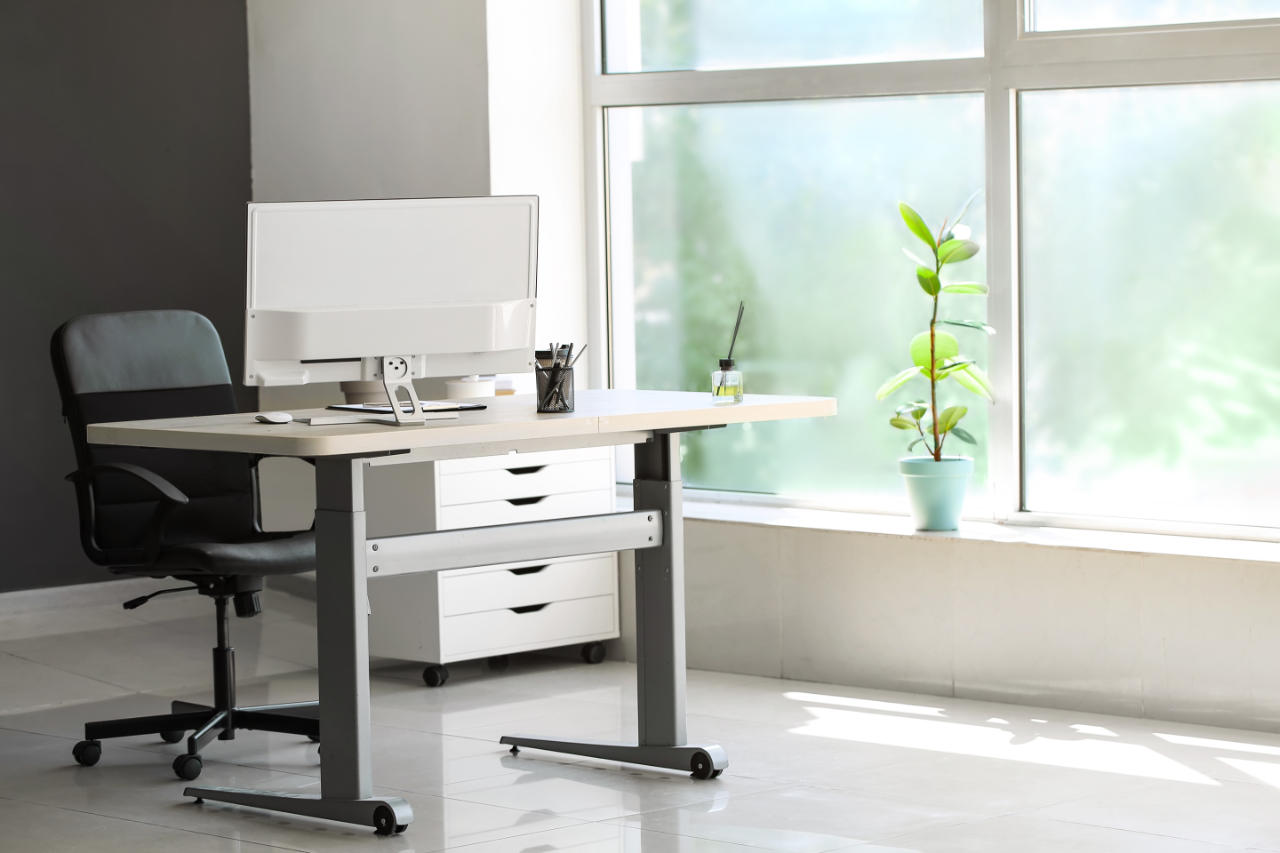Sitting at a desk has long been linked to musculoskeletal disorders (MSD), with 477,000 workers suffering from the condition between 2021 and 2022. A potential answer for workers could be using a standing desk that offers some benefits worth considering.
What is a standing desk?
As the name suggests, a standing desk is quite simply a desk that is designed for you to stand at your workstation rather than sit. Standing desks are growing in popularity in offices today and can offer users health benefits over their sitting desk counterparts. From improving users’ posture to being linked to helping with acute or chronic pain or discomfort, the benefits of standing desks seem to be growing.
Standing desks are not the only alternative to traditional desks.
Find out what a sit-stand desk is and how to use it.
How high should a standing desk be?
One of the benefits of a standing desk that is adjustable is that it has no set height, and it can be adjusted to suit the individual user’s needs and stature, which varies across the workforce. When choosing the correct height, there are some recommendations to ensure your body is in the correct position to encourage good posture as you work.
Getting the right height standing desk for you is crucial in obtaining a good, neutral posture for working at the desk. Find the right height that determines your posture but feels natural for you.
The Health and Safety Executive has recommendations for different types of desk and table heights, depending on particular tasks.

What are the different types of standing desks?
With the growing popularity of standing desks, various types are now available.
From a straightforward fixed standing desk – where you need to know your optimum ergonomic height in advance as they do not adjust – to manual and electric height-adjustable desks allowing you to determine your perfect height to converter options that will enable the choice between sitting and standing at your desk.
What are the benefits of standing desks?
With the growing posture issues of users sitting for prolonged periods at a desk, a standing desk naturally benefits your posture and provides the ability to move and change your posture during the day – although it’s important to remember to align your standing desk to the optimum height to achieve this. Maintaining a more natural posture when standing minimises developing shoulder, neck and back pain and reduces your risk of suffering from a musculoskeletal disorder.
Other benefits of a standing desk include helping to lower your risk of conditions related to long periods of sitting, such as circulatory health risks. Circulation will improve for those opting to use a standing rather than sitting desk as blood flows around the body better when standing and provides the option and ability to move and use muscles in a different way.
Having a break from working on Display Screen Equipment (DSE) is recommended by the Health and Safety Executive (HSE) for various reasons, including encouraging users to move around to avoid issues related to sitting for long periods. Therefore, a standing desk can be beneficial as it’s easier to move your body and stretch when standing.
Read our guide on the benefits of using a sit-stand desk.

Are standing desks good for back pain?
If you suffer from back pain caused by prolonged sitting periods, trying a standing desk could help reduce the risk of back pain or general muscular discomfort. Ensuring a standing desk is at the correct height to support your posture could ease symptoms, but longer standing periods may not be the answer, and a mixture of the two could benefit you more.
A study in the US found that increasing time standing rather than sitting reduced neck and upper back pain by 54%.
If you are suffering from back pain that isn’t eased by switching from a sitting desk to a standing desk, talk to your manager who will be able to help with reviewing your workstation assessment or signpost you to further help.
For DSE users, back pain and upper limb disorders is one of the issues faced by many, and your employer should carry out regular DSE assessments. Find out why DSE assessments are important.
Are standing desks good for posture?
Using a standing desk correctly can help your posture, as it is easier to maintain a natural posture in an upright position than when sitting. When setting up your standing desk, it is important to follow guidelines to ensure it is set up to benefit your height and allow you to work while comfortably maintaining a good posture.
Learn more about DSE guidance for using a standing desk.
Calorie burn: standing versus sitting
You burn marginally more calories when standing than sitting, so another benefit of a standing desk can be helping maintain a healthier weight when working at a standing desk. Many aspects of your life can affect the number of calories you burn, whether it’s your current weight, age or metabolic rate – but you can burn an average of 30 more calories if you stand for more extended periods than sitting.
As it is easier to stretch and move around when standing, this could also slightly increase the number of calories you burn while using a standing desk instead of a sitting desk.

How to stand at a standing desk
The guidelines for standing at a standing desk include the following:
- Keeping your feet shoulder-width apart and relaxed shoulder, stand straight to help work out the best height for your standing desk.
- Your arms should be down by your side naturally.
- Your elbows should be bent at 90 degrees on the desk keeping your forearms parallel to the ground. It should feel comfortable to use your keyboard and mouse without overstretching, and ensure that your forearms and wrists are supported, and your wrists are not bent.
- The distance can then determine the optimum height for your standing desk from your elbow to the ground.
- Your core muscles should be engaged and shoulders down to find a neutral spine position that is good for your posture and a comfortable position for you to stand.
- Your monitor should be placed directly in front of where you’re standing and the top of the screen at eye level, so you are not forced to bend your head down or tilt it up to keep your eyes on the screen and provide the opportunity to look into the distance and provide a different focal distance to rest the eyes.
DSE and standing desks
Display Screen Equipment Regulations (1992) cover any user who works on any kind of display equipment – whether a computer monitor, laptop, tablet or smartphone – for a prolonged period to do their work.
The HSE determine a DSE user is anyone who uses DSE for an hour or more or is dependent on it to undertake their work.
Using a standing desk can be part of a DSE-compliant workstation, but guidelines on setting up and using the standing desk must be followed to comply.
Refer to your employer’s DSE policy to ensure your standing desk meets the necessary criteria.
Here at Praxis42, our Display Screen Equipment training course ensures all DSE users correctly arrange workstations regardless of their desk type. We also offer an online DSE self-assessment tool so employees can assess their own workstations. And for those who would benefit from tailored advice from our ergonomic specialists, we provide a Virtual Ergonomic Assessment service.

Adam Clarke
Managing Director (Consulting)
